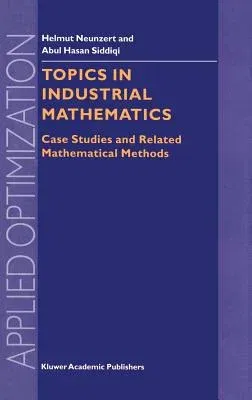Industrial Mathematics is a relatively recent discipline. It is
concerned primarily with transforming technical, organizational and
economic problems posed by indus- try into mathematical problems;
"solving" these problems byapproximative methods of analytical and/or
numerical nature; and finally reinterpreting the results in terms of the
original problems. In short, industrial mathematics is modelling and
scientific computing of industrial problems. Industrial mathematicians
are bridge-builders: they build bridges from the field of mathematics to
the practical world; to do that they need to know about both sides, the
problems from the companies and ideas and methods from mathematics. As
mathematicians, they have to be generalists. If you enter the world of
indus- try, you never know which kind of problems you will encounter,
and which kind of mathematical concepts and methods you will need to
solve them. Hence, to be a good "industrial mathematician" you need to
know a good deal of mathematics as well as ideas already common in
engineering and modern mathematics with tremen- dous potential for
application. Mathematical concepts like wavelets, pseudorandom numbers,
inverse problems, multigrid etc., introduced during the last 20 years
have recently started entering the world of real applications.
Industrial mathematics consists of modelling, discretization, analysis
and visu- alization. To make a good model, to transform the industrial
problem into a math- ematical one such that you can trust the prediction
of the model is no easy task.

